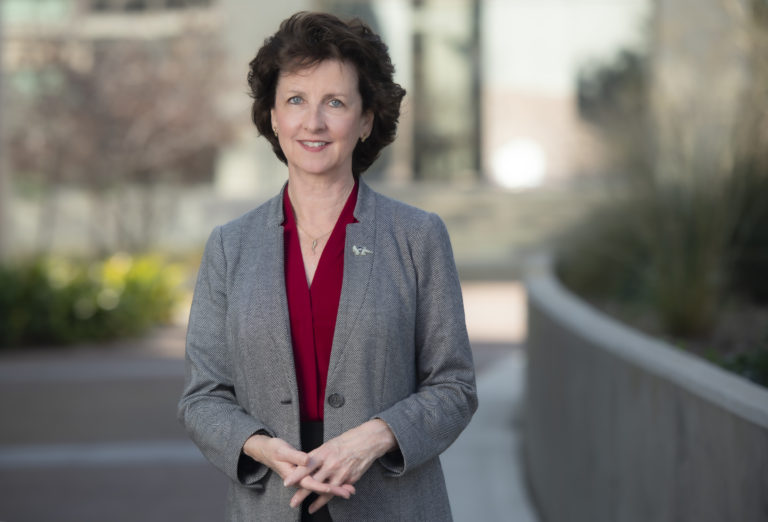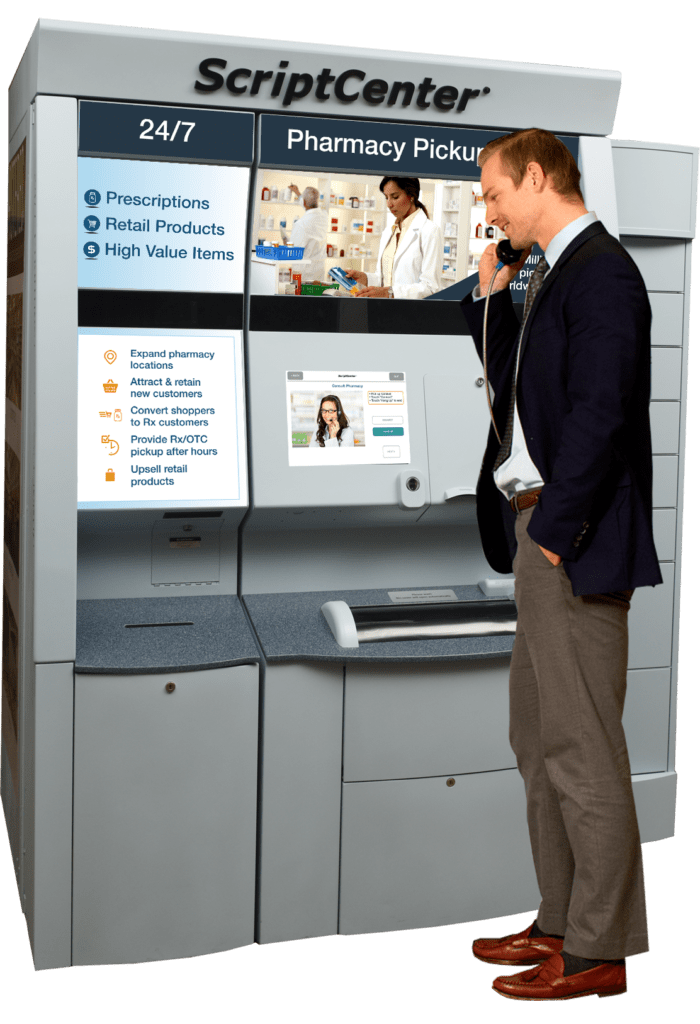“If you don’t pick your prescription up, you’re not going to be adherent with your medication,” said Jan D. Hirsch, founding dean of UCI’s School of Pharmacy & Pharmaceutical Sciences and lead author of the study. “And if you’re not adherent with your medications, then we have a long cascade of negative effects.”
Failing to follow the prescriber’s orders, such as taking medications as directed, so often results in worse outcomes and higher healthcare costs that the World Health Organization has dubbed this “a worldwide problem of striking magnitude.”
Patients could opt in to pick up their prescriptions at a 24/7 kiosk located at their workplace. They would order from the pharmacy as usual, and once the pharmacist had filled the prescription, a technician would deliver it to the kiosk. The patient would enter a code, and their medication would pop out.
“You could think of it like an ATM machine for prescriptions,” Hirsch said. The kiosk also offered some common over-the-counter medications for purchase.
Similar to an ATM machine, the automated kiosk delivered pharmacist-filled prescriptions to patients when they entered their code. Patients could call the pharmacist with questions using the attached phone. Courtesy of Asteres Inc.
Patients could call the pharmacist with questions from a phone on the kiosk. When filling a new prescription, the pharmacist would call the patient before pickup to go over the medication and answer questions, as required by California law. Patients in the study reported that they were satisfied and had their questions answered when speaking to the pharmacist via phone. Since it’s contactless, this pickup method could be particularly useful during the COVID-19 pandemic.
“The Board of Pharmacy in California would not let the kiosk be located outside a pharmacy prior to this study. They were concerned about patient access to the pharmacist,” said co-author Charles E. Daniels, associate dean for professional practice and chief pharmacy officer at UCSD. “We found that the pharmacist counseling was pretty much the same for patients using the kiosk compared to those using the regular pharmacy counter.”
The pharmacy used in the research, Sharp Rees-Stealy in San Diego, fills 40,000 prescriptions per year. Based on the pickup rates in the study, the kiosk could save the pharmacy $12,000 annually, because patients picked up an additional 400 prescriptions per year.
“This also means the crucial pickup step toward medication adherence will occur 400 more times, which is not trivial,” Daniels said.
When a prescription is filled but never picked up, pharmacies lose money through restocking and potential overstocking, and it can affect their performance metrics, which are important to health plans. Costs for patients often increase as well because they’re more likely to have to return to the doctor or end up in the emergency room.
This table, published in the study, shows that patients overwhelmingly endorsed having the kiosk as an option and still felt that their questions were answered. Courtesy of Hirsch et al.
Decreased time restocking medications and delivering prescriptions to patients in person also frees up time for pharmacists to focus on patient services such as administering immunizations.
“As the COVID-19 vaccines start rolling out, pharmacists will be key to the rapid and equitable distribution and administration of doses, just as they have been with COVID-19 testing,” Hirsch said.
Participants in the study were all employees at San Diego’s Sharp Memorial Hospital, and the kiosk was conveniently located in their workplace.
“We’re very careful to say that’s a real limitation of the study,” Hirsch noted. “We need to repeat the trial use of this kiosk with people who might not be as comfortable or familiar with the prescription process.”
Because this study was observational, patients opted to utilize the kiosk instead of being randomly assigned to use either it or the regular pharmacy counter. However, Hirsch and Daniels feel that this mirrors how the kiosk would work in the real world since people would have the option of picking prescriptions up at the regular pharmacy counter or at the kiosk.
Hirsch hopes that the kiosks will be expanded to remote areas, schools and workplaces to reduce barriers to medication adherence.
“Students at UCI or UCSD could benefit from easy, contactless pickup of prescriptions and over-the-counter medications,” she said.
About the University of California, Irvine: Founded in 1965, UCI is the youngest member of the prestigious Association of American Universities. The campus has produced three Nobel laureates and is known for its academic achievement, premier research, innovation and anteater mascot. Led by Chancellor Howard Gillman, UCI has more than 36,000 students and offers 222 degree programs. It’s located in one of the world’s safest and most economically vibrant communities and is Orange County’s second-largest employer, contributing $5 billion annually to the local economy. For more on UCI, visit www.uci.edu.
Media access: Radio programs/stations may, for a fee, use an on-campus ISDN line to interview UCI faculty and experts, subject to availability and university approval. For more UCI news, visit news.uci.edu. Additional resources for journalists may be found at communications.uci.edu/for-journalists.






